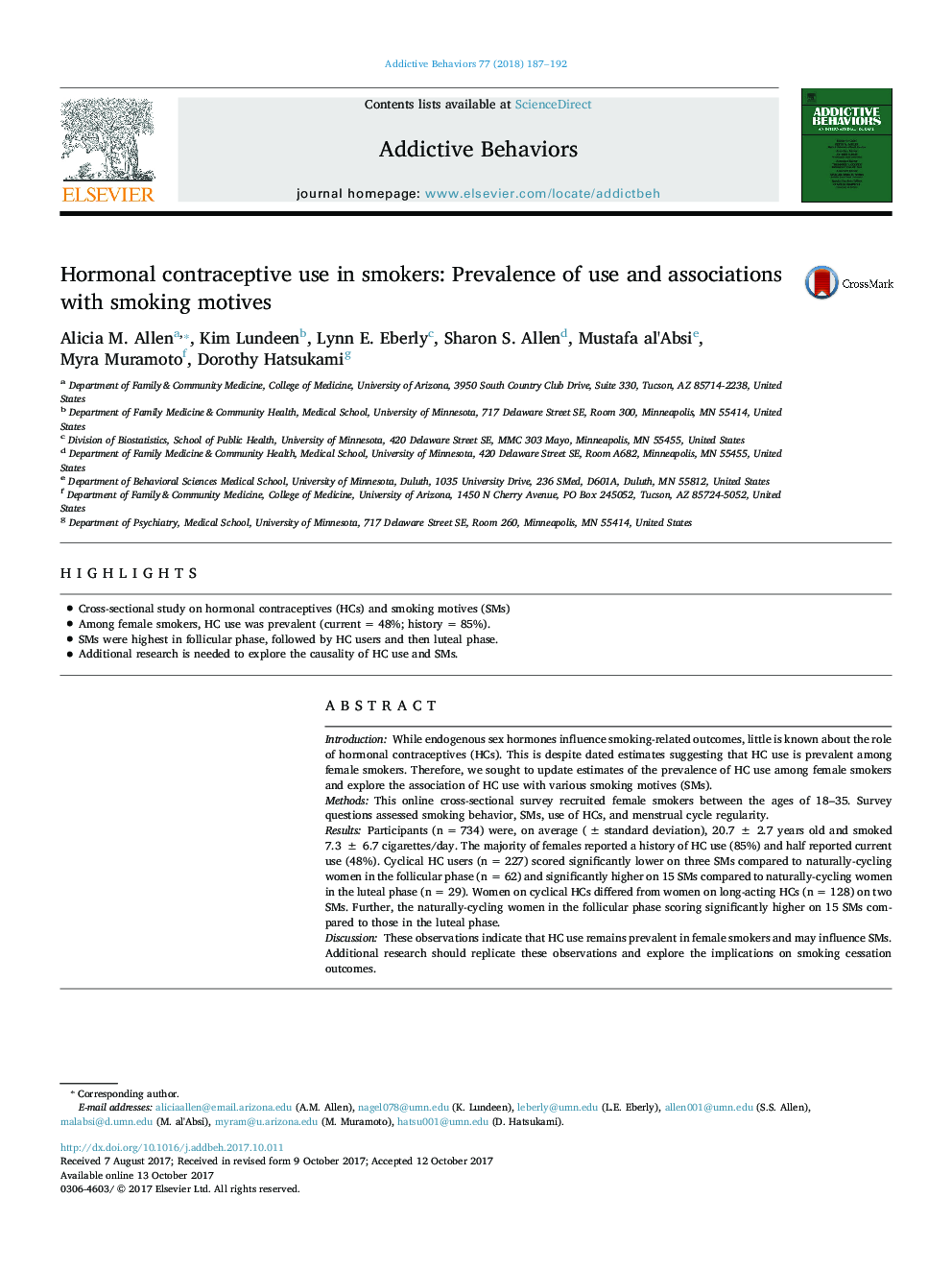| Article ID | Journal | Published Year | Pages | File Type |
|---|---|---|---|---|
| 5037548 | Addictive Behaviors | 2018 | 6 Pages |
â¢Cross-sectional study on hormonal contraceptives (HCs) and smoking motives (SMs)â¢Among female smokers, HC use was prevalent (current = 48%; history = 85%).â¢SMs were highest in follicular phase, followed by HC users and then luteal phase.â¢Additional research is needed to explore the causality of HC use and SMs.
IntroductionWhile endogenous sex hormones influence smoking-related outcomes, little is known about the role of hormonal contraceptives (HCs). This is despite dated estimates suggesting that HC use is prevalent among female smokers. Therefore, we sought to update estimates of the prevalence of HC use among female smokers and explore the association of HC use with various smoking motives (SMs).MethodsThis online cross-sectional survey recruited female smokers between the ages of 18-35. Survey questions assessed smoking behavior, SMs, use of HCs, and menstrual cycle regularity.ResultsParticipants (n = 734) were, on average (± standard deviation), 20.7 ± 2.7 years old and smoked 7.3 ± 6.7 cigarettes/day. The majority of females reported a history of HC use (85%) and half reported current use (48%). Cyclical HC users (n = 227) scored significantly lower on three SMs compared to naturally-cycling women in the follicular phase (n = 62) and significantly higher on 15 SMs compared to naturally-cycling women in the luteal phase (n = 29). Women on cyclical HCs differed from women on long-acting HCs (n = 128) on two SMs. Further, the naturally-cycling women in the follicular phase scoring significantly higher on 15 SMs compared to those in the luteal phase.DiscussionThese observations indicate that HC use remains prevalent in female smokers and may influence SMs. Additional research should replicate these observations and explore the implications on smoking cessation outcomes.
